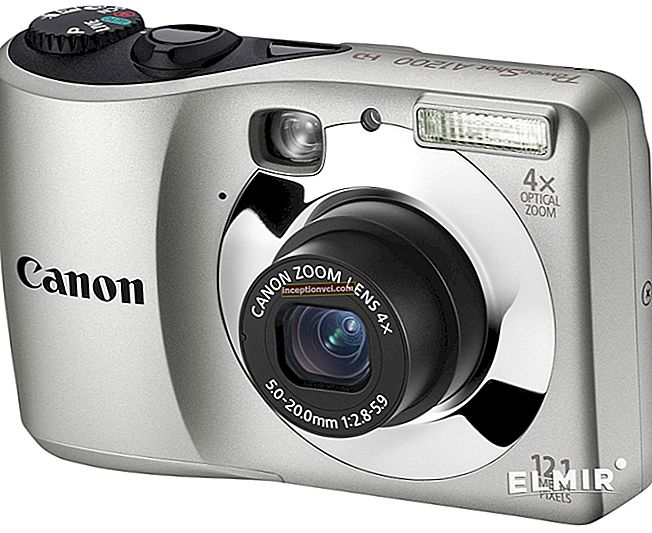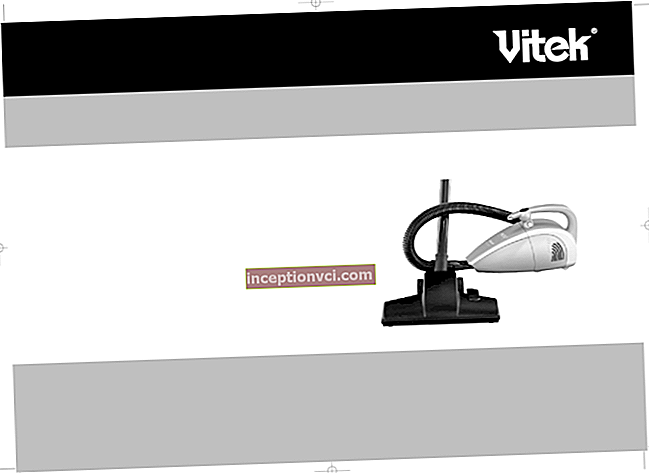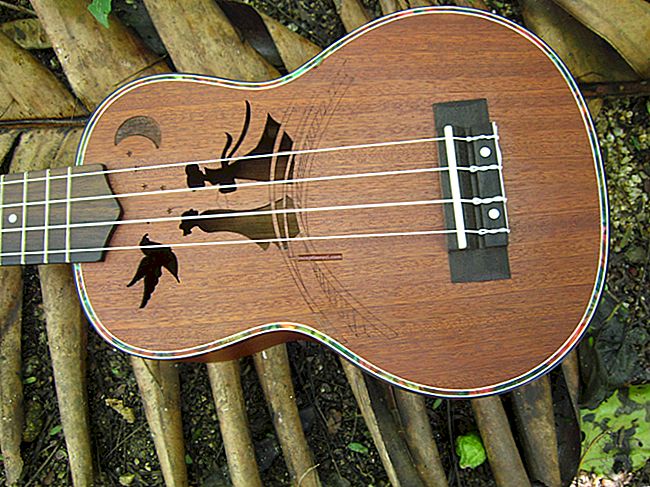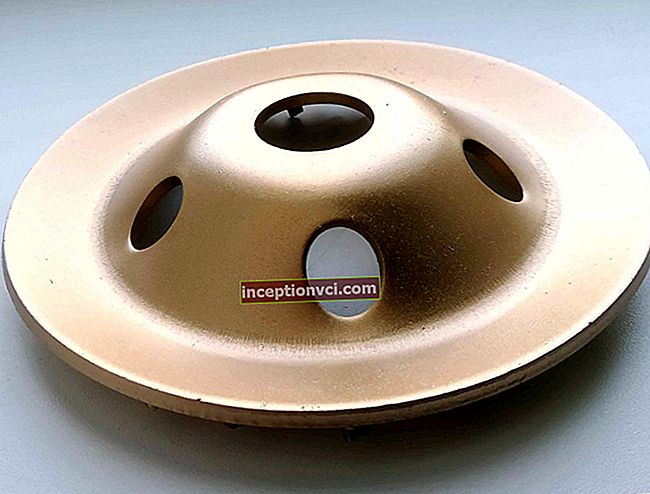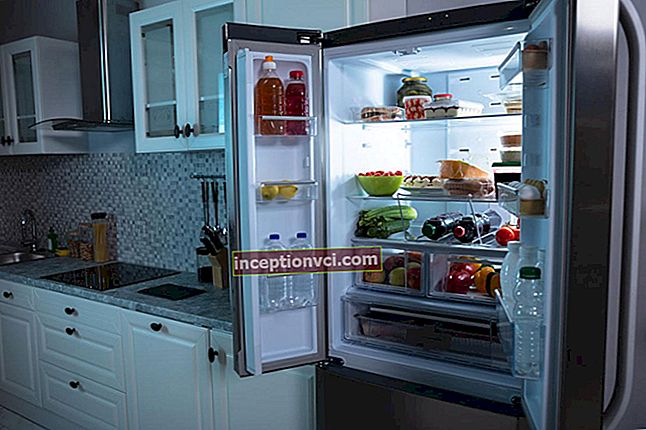Canon L-series (Luxury) lenses are the best and most expensive lenses in Canon's line of lenses. These lenses have excellent optical quality and a durable body in order to withstand harsh loads, environmental conditions, and also constant use. Most of the latest L-series lenses are splash and dust resistant. It is for all the reasons listed above that L-series lenses are popular with serious amateurs and professionals.
Many L-series lenses contain lenses made of fluorite or ultra-low-dispersion glass and are used in combination with spherical and low-dispersion elements. Although this is a necessary, but still not a sufficient condition, because there are lenses not from the L-series with the same optical elements. L-series lenses are often equipped with optical stabilizers and USM motors, especially in recent years. There are lenses with an EF / EF-S mount that have comparable, and sometimes even superior optical quality, but are not L-series due to their lack of sturdy construction or other features.
L-series lenses with a focal length of 200 mm and above usually have a white color instead of the usual black. There is an opinion that due to this they heat up less when exposed to sunlight, because the heat is negatively reflected in the quality of the resulting photographs. But taking into account the presence of large black lenses, this is most likely just a marketing move.
L-series lenses are marked with a red ring on the lens barrel and an L in the name.
Zoom lenses
Ultra wide angle
16-35mm f / 2.8L USM (Discontinued). Canon launches the world's top wide-angle zoom lens. The new lens inherits the excellent performance of the 17-35mm f / 2.8L USM, and also has the widest wide-angle zoom range in its class.
The first lens in the EF series to use three types of spherical elements for high-quality aberration correction during zooming. The 16-35mm f / 2.8L USM has the highest image quality in its class.
Also, the lens uses two extra-low-dispersion elements that correct chromatic aberrations, which are characteristic of wide-angle lenses. Due to this, there is practically no red border along the edges of objects, and the pictures are characterized by high resolution, as well as contrast. Internal focusing and ultrasonic drive work quietly and quickly, and a new diaphragm ensures better bokeh reproduction.
Improvement of the focusing system made it possible to achieve a minimum focusing distance, which is exactly 0.28 m in any zoom range. The front lens does not rotate, making it easier to shoot with a polarizing filter. The lens is protected from dust in moisture and allows you to work in harsh conditions. The rear lens can be fitted with a gelatin filter.
The lens is equipped with a new electromagnetic drive with an annular diaphragm. The practically round opening at wide apertures improves the reproduction of blurred backgrounds and point light sources. The secondary aperture removes unwanted light, while increasing the contrast of images.
Technical specifications
Autofocus drive | Annular ultrasonic USM |
Minimum focusing distance (m) | 0,28 |
Diagonal angle of view | 108° 10' - 63° |
Filter diameter (mm) | 77 |
Angle of field of view horizontally | 98° - 54° |
Lens construction (number of elements / groups) | 14/10 |
Lens hood | EW-83E |
Maximum diameter x length (mm) | 83.5x103 |
Maximum magnification | Wide-angle position: 0.11; telephoto: 0.22 |
Minimum aperture | f / 22 |
Number of diaphragm petals | 7 |
Soft case | LP1319 |
Ultrasonic drive | there is |
Weight (g) | 600 |
16-35mm f / 2.8L II USM. The new ultra-wide-angle professional zoom lens, which replaces the popular 16-35mm f / 2.8L USM lens, has the most powerful zoom of Canon's ultra-wide angle lenses, providing exceptional edge-to-edge sharpness. The aperture f / 2.8 guarantees excellent shooting quality in low light conditions, full control of the depth of field throughout the zoom range.

The design of the optical system of the lens has undergone a complete revision in order to achieve the highest contrast and increased resolution. Contrast and sharpness at any point of the image in the entire range of focal lengths is provided by three types of aspherical elements (replicated, matte, cast glass). Two UD elements eliminate chromatic aberrations, while the SuperSpectra coating suppresses ghosting and glare.
The ultrasonic ring-type motor uses Canon's advanced algorithms for fast auto focusing. Manual focus is also available at any time. The lens is protected from dust in moisture and allows you to work in harsh conditions.
Technical specifications
Angle of the field of view (horizontally, vertically, diagonally): | 98º - 54º, 74º 10 '- 38º, 108º 10' - 63º |
Lens construction (number of elements / groups): | 16/12 |
Aperture blades: | 7 |
Minimum aperture: | 22 |
Minimum focusing distance (m): | 0.28 |
Maximum magnification (x): | 0.22 (at 35mm) |
Distance information: | there is |
Image Stabilizer: | not |
Autofocus drive: | ultrasonic ring type (Ring USM2) |
Filter diameter (mm): | 82 |
Maximum diameter x length (mm): | 88.5x111.6 |
Weight (g): | 635 |
Magnification with Extension Tube EF12 II: | 0,62 - 0,361 |
Magnification with Extension Tube EF25 II: | 1,11 - 0,801 |
17-40mm f / 4.0L USM. A high-quality ultra-wide-angle zoom lens with a wider zoom range and maximum aperture of f / 4, the speed of autofocusing is not inferior to the best lens in its class 16-35mm f / 2.8L USM.
The 17-40 mm zoom range of 2.4 provides versatility as well as greater creative freedom. With the use of an APS-C matrix, the lens is equivalent to 28-70 mm standard format 35 mm.
This lens will become an irreplaceable high-quality optical instrument for its owners.
To ensure distortion-free imaging, the lens uses three aspherical elements of two types, and an ultra-low dispersion lens eliminates chromatic aberrations. A lens coating reduces glare. The minimum focusing distance is 0.28 m.
Electromagnetic diaphragm smooths out tonal transitions, and also gives a natural look to images that are out of focus. Additional aperture reduces glare and improves image contrast.
Technical specifications
Focal length (mm): | 17 - 40 |
Construction (elements / groups): | 12/9 |
Minimum focusing distance (m): | 0,28 |
Minimum aperture: | 22 |
Viewing angle (diagonal): | 104° - 57°30' |
Aperture ratio: | f4.0 |
Diameter for light filter, (mm): | 77 |
Aperture blades: | 7 |
Hood type: | EW-83E |
Dimensions (diameter x length, mm): | 83.5x96.8 |
Weight (g): | 500 |
20-35mm f / 2.8L (Discontinued). This is one of Canon's oldest line of lenses. It was released in 1989, and production ceased in the mid-90s, replaced by the 17-35mm f / 2.8 USM L lens, which has already been replaced by the 16-35mm f / 2.8 USM L.
Technical specifications
Aperture ratio | 2.8 |
Minimum aperture | 22 |
Construction (elements / groups) | 15/12 with one high quality spherical element |
Maximal magnification (rate) | 0,09 |
Aperture blades | 8 |
Minimum focusing distance (m) | 0.5 |
Dimensions (diameter / length) (mm) | 89x79 |
Weight (g) | 570 |
Standard
24-70mm f / 2.8L USM. The lens provides an extended zoom range. The new design increases the range of focal lengths, while maintaining high quality images. The minimum focusing distance is reduced to 0.38 m.
The lens uses two types of aspherical lenses that are required to achieve a wide zoom range. They provide good distortion compensation during zooming while maintaining flawless image quality.
The optical design uses a UD lens, which perfectly compensates for chromatic aberrations that occur when shooting in a wide angle. The minimum focusing distance has dropped to 0.38 m from 0.5 m, which is the shortest focal length for this class of lenses.
The new EMD electro-magnetic diaphragm has an almost circular opening when fully open. Also improved boke.
All optical elements are lead-free and made of environmentally friendly glass.
The lens is protected from moisture and dust. And a special high-performance coating minimizes parasitic images.
Auto focusing of the lens is performed silently at high speed. Manual focusing is possible even in automatic mode.
The length of the lens changes at different focal lengths, and the front part does not rotate. Thanks to this, the front part can be fitted with various accessories without restrictions that could be associated with its rotation or movement.
Technical specifications
Aperture ratio | 2.8 |
Minimum aperture | 22 |
Construction (elements / groups) | 16/13 |
Viewing angles | 84 ° - 34 ° (horizontal) |
Aperture blades | 6 |
Minimum focusing distance (m) | 0.48 |
Autofocus drive | ultrasonic motor Ultrasonic |
Filter diameter (mm) | 77 |
Dimensions (diameter / length) (mm) | 83.2x123.5 |
Weight (g) | 950 |
24-105mm f / 4.0L IS USM. The lens is highly water and dust resistant and meets Canon's strictest standards for precision optics. It is designed specifically for photo reports, celebrity photography, various events, while traveling. In general, in those moments when a manoeuvrable and lightweight lens is needed at hand, which provides high quality images.
This lens, together with the 10 -40mm f / 4L USM and 70-200mm f / 4L USM lenses, completes the f / 4L series of zoom lenses. These lenses have been developed taking into account the opinions of professional photographers. Image Stabilization provides a 3-step equivalent, allowing you to shoot under longer exposure conditions.
The 24-105mm f / 4L IS USM is lighter than the popular 24-70mm f / 2.8L USM.
Stabilization is a good way to reduce blur caused by camera shake when shooting. The gyroscopic sensor detects vibrations and causes the movement of the correction lens group in a perpendicular direction in relation to the optical axis, which allows controlling the light flow and restoring the correct position of the image.
Three-stop synchronization allows shooting at a focal length of 105 mm at a shutter speed of 1/125 and still get clear images without the noise caused by camera shake, which provides very wide opportunities for shooting in poor lighting conditions.
The lens uses a circular ultrasonic drive. Performance is boosted with a powerful processor and advanced auto focusing algorithm. Due to the precise and precise fixation of the lenses at torque, correct focusing is ensured on the first try.
The lens provides the highest quality images with the same aperture throughout the entire focal length range. It is equipped with an almost perfectly circular diaphragm.
To reduce dimensions and improve image clarity, UD elements are used to help eliminate chromatic aberrations. Aspherical lenses correct spherical aberrations for crisp, clear images. The developers were able to reduce glare and halo effect. Coatings reduce the reflective effect of lenses, resulting in crisp, vivid images in a natural color gamut.
The lens transmits distance information to the camera, ensuring compatibility with E-TTL II when used with a flash.
Technical specifications
Viewing angle (horizontal, vertical, diagonal): | 74º - 19º 20 ', 53º - 13º, 84º - 23º 20' |
Lens construction (elements / groups): | 18/13 |
Aperture blades: | 8 |
Minimum aperture: | 22 |
Minimum focusing distance (m): | 0,45 |
Maximal magnification (rate): | 0.23 (at 105 mm) |
Distance information collection system: | there is |
Image Stabilization System: | 3-stage |
Autofocus drive: | ring ultrasonic drive (USM) ² |
Filter diameter (mm): | 77 |
Maximum diameter and length (mm): | 83.5x107 |
Weight (g): | 670 |
Magnification with Extension Tube EF12 II: | 0,40-0,12 |
Magnification with Extension Tube EF25 II: | 0,61-0,271 |
Lens hood: | EW-83H |
Soft case: | LP1219 |
G.F. Holder III (hood III *): | not |
G.F. Holder III (blend IV *): | (0) |
Compatible with extenders EF1.4x II and EF2x II: | not |
28-70mm f / 2.8L USM (Discontinued). The lens can be considered legendary. It appeared in the distant November 1993! Imagine, this lens is already 17 years old, and it is still alive. Canon EF 24-70 f / 2.8L changed it only in November 2002, after exactly 9 years. During this period 28-70 is recognized as the best standard zoom for Canon cameras.
It is impossible to get this lens in Ukraine, except that only one of the "old-fashioned" photographs does not have a crisis and he decides to sell all his photographic equipment. In common people, in the slang of photographs 28-70, they call them the breadwinner. It can be concluded that the lens was a friend of the photographer in a time of turbulent life, helped out in any business, be it a reportage, a studio, or a landscape. The lens is great for any kind of shot.
The lens looks very impressive, both in size and weight. The focusing ring is slightly different. At 70mm the lens will be folded, and at 24mm it will significantly increase in size. Because of this, the focusing ring is inverted. The hood is attached to the base.
The lens is very quiet thanks to the USM motor. Focuses quickly on the subject. Has a very nice bokeh. The sharpness of the picture is at the level of L-lenses, what else can you say. The only thing is that at aperture 2.8, the clarity is lower than we say at 4.
Technical specifications
Minimum angle of view (degrees min.) | 34 |
Maximum angle of view (degrees min) | 75 |
Filter thread diameter (mm) | 77 |
Minimum focus distance (mm) | 28 |
Maximum focal length (mm) | 70 |
Minimum focusing distance (m) | 0.5 |
Minimum aperture | 22 |
Aperture blades | 8 |
Auto focus | yes |
Ultrasonic motor | yes |
Number of element groups | 11 |
Number of elements | 16 |
Number of spherical elements | 1 |
The number of low-dispersed elements | — |
Diameter (mm) | 83.2 |
Length (mm) | 117.6 |
Weight (g) | 880 |
28-80mm f / 2.8-4.0L USM (Discontinued). It went on sale in April 1989.
Technical specifications
Viewing angle (horizontal, vertical, diagonal): | 75° – 30°, 46° – 17°, 65° – 25° |
Filter thread diameter (mm) | 72 |
Minimum focus distance (mm) | 28 |
Maximum focal length (mm) | 80 |
Minimum focusing distance (m) | 0.5 |
Minimum aperture | 22 |
Aperture blades | 8 |
Auto focus | yes |
Ultrasonic motor | yes |
Number of element groups | 11 |
Number of elements | 15 |
Diameter (mm) | 84 |
Length (mm) | 119.5 |
Weight (g) | 945 |
Television
28-300mm f / 3.5-5.6L IS USM. The lens has a large zoom range of approximately 11ct from wide-angle to telephoto. Allows professional photographers to reduce the frequency of lens replacement, as well as their number.
The lens uses image stabilization technology, which allows you to increase the shutter speed by three stops without a noticeable increase in blur when shooting static objects or panor.
The ultrasonic ring motor located inside the lens produces high-speed, high-precision, ultra-efficient and virtually silent autofocus. The minimum focusing distance is only 0.7 m.
The coating and shape of the optical elements have been improved to suppress ghosting and glare.
The 22 element design in 16 groups guarantees high resolution at any focal length. The new model is equipped with an electromagnetic diaphragm, which operates silently, quickly, accurately. The round bore of the diaphragm produces an attractive bokeh effect. Three UD optical elements eliminate chromatic aberrations, while spherical elements eliminate other aberrations that occur when zooming. The result is the unrivaled sharpness and clarity of the professional L-series lens line.
The zoom mechanism allows you to customize the sensitivity of the zoom system to the user's preference. The zoom can be easily fixed at any focal length.
Befitting L-series lenses, the 28-300mm f / 3.5-5.6L IS USM has a rugged, dust- and water-resistant design.
Technical specifications
Viewing angle (horizontal, vertical, diagonal): | 75° - 8° 15’, 46° – 4° 35’, 65° – 6° 50’ |
Lens construction (elements / groups): | 22/16 |
Aperture blades: | 8 |
Minimum aperture: | f / 22-38 |
Minimum focusing distance (m): | 0,7 |
Maximal magnification (rate): | 0.06 (wide-angle) 0.3 (telephoto) |
Distance information collection system: | there is |
Image Stabilization System: | there is |
Autofocus drive: | ring ultrasonic motor |
Filter diameter (mm): | 77 |
Maximum diameter and length (mm): | 92 x 184 |
Weight (g): | 1670 |
Magnification with Extension Tube EF12 II: | compatible |
Magnification with Extension Tube EF25 II: | only compatible in "body" mode |
Lens hood: | ET-83G |
Lens pouch: | LZ1324 |
Coating | Super Spectra coating |
Maximum deviation during image stabilization | approx. 1.1 mm |
Maximum angle of correction for image stabilization | approx. 0.5 ° (telephoto, infinity focus) |
Compatible with extenders EF1.4x II and EF2x II: | not |
35-350mm f / 3.5-5.6L USM (Discontinued).
Technical specifications
Focal length (mm) | 35-350 |
Construction (elements / groups) | 21/15 |
Relative aperture | f / 3.5-5.6 |
Minimum aperture | 22-32 |
Minimum focusing distance (m) | 0.6 |
line of sight | 63°-7° |
Aperture blades | 8 |
Filter diameter (mm) | 72 |
Focusing | Internal |
Hood type | EW-78 |
Lens case type | LH-D22 |
Dimensions (Diameter x Length, mm) | 85x167.4 |
Weight (g) | 1385 |
50-200mm f / 3.5-4.5L (Discontinued).
Technical specifications
Focal length (mm) | 35-350 |
Construction (elements / groups) | 16/14 |
Relative aperture | f / 3.5-5.6 |
Minimum aperture | 22 - 29 |
Minimum focusing distance (m) | 1.3 |
line of sight | Wide angle - 39.6, 27, 46.8 Tele - 10.3, 6.9, 12.3 |
Aperture blades | 8 |
Maximal magnification (rate): | 0,23 |
Filter diameter (mm) | 58 |
Focusing | Internal |
Dimensions (Diameter x Length, mm) | 75.6 x145.8 |
Weight (g) | 695 |
70-200mm f / 4.0L USM. High quality L-series telephoto zoom with a maximum aperture of f / 4. It is distinguished by its low weight and compact dimensions, equipped with an internal focusing system, an ultrasonic drive for quiet and fast automatic focusing. The front element remains stationary during focusing, which makes it convenient to use light filters.
Technical specifications
Focal length | 70 - 200 mm |
Aperture ratio | f / 4.0 |
Minimum aperture | 32 |
Construction (elements / groups) | 16/13 |
Viewing angles | 29 ° - 10 °, 19 ° 30 '- 7 °, 34 ° - 12 ° / horizontal, vertical, diagonals / |
Aperture blades | 8 |
Minimum focusing distance (m) | 1.2 |
Autofocus drive | ultrasonic motor |
Magnification factor | 0.21 / at a distance of 200 mm / |
Filter diameter (mm) | 67 |
Dimensions (diameter / length) (mm) | 76x172 |
Weight (g) | 705 |
70-200mm f / 4.0L IS USM. Canon's first interchangeable lens with 4-stop IS, ideal for low-light photography without a tripod or flash.
Dust and moisture resistant, comfortable and compact, this advanced lens is built to the highest standards of precision optics.
The lens is a lighter version of the updated 70-200mm f / 2.8L IS USM. Expanding Canon's range of professional lightweight L-series zoom lenses. F / 4L lenses are made for professional photographers who require a lightweight zoom lens with a fixed aperture for the entire zoom range.
The four-step image stabilizer opens up new possibilities for photography in low light conditions. Normally a shutter speed of 1/250 is used, and the stabilizer achieves similar stability without smudging at a shutter speed of 1/15.
It also allows you to significantly reduce the blur caused by camera shake during shooting. The gyroscopic sensor detects vibrations and causes the movement of the correction lens group in a perpendicular direction in relation to the optical axis, which allows controlling the light flow and restoring the correct position of the image.
When installing the camera on a tripod, the stabilizer is automatically turned off.
The lens uses a circular ultrasonic drive. Performance is boosted with a powerful processor and advanced auto focusing algorithm. Due to the precise and precise fixation of the lenses at torque, correct focusing is ensured on the first try.
The lens provides the highest quality images with the same aperture throughout the entire focal length range. It is equipped with an almost perfectly circular diaphragm. When zooming in, the lens remains the same size.
To reduce dimensions and improve image clarity, UD elements are used to help eliminate chromatic aberrations. Aspherical lenses correct spherical aberrations for crisp, clear images. The developers were able to reduce glare and halo effect. Coating reduces
The new optical design limits the size of the lens, and also increases the clarity of images. Fluorite and two ultra-low dispersion elements are used to eliminate residual chromatic aberrations. By improving the Super Spectra coating and lens shape, the developers have been able to reduce flare and ghosting. By increasing light absorption, Super Spectra Coating reduces the reflective effect of lenses for crisp, vivid images in a natural color gamut.
The shape of the AF and Image Stabilizer switches has been redesigned to reduce the possibility of accidentally enabling / disabling these functions.
Technical specifications
Focal length | 70 - 200 mm |
Aperture ratio | f / 4.0 |
Minimum aperture | 32 |
Construction (elements / groups) | 20/15 |
Aperture blades | 8 |
Minimum focusing distance (m) | 1.2 |
Autofocus drive | ultrasonic motor |
Image Stabilizer | + / 4-stage image stabilizer with 2 modes / |
Filter diameter (mm) | 67 |
Dimensions (diameter / length) (mm) | 76.2x172.7 |
Weight (g) | 760 |
70-200mm f / 2.8L USM. A high-aperture L-series telephoto lens that uses four extra-low dispersion glass elements to correct chromatic aberration for high-contrast, color-accurate images.
Technical specifications
Focal length | 70 - 200 mm |
Aperture ratio | f / 2.8 |
Minimum aperture | 32 |
Construction (elements / groups) | 18/15 |
Viewing angles | 34 ° -12 ° / diagonally / |
Aperture blades | 8 |
Minimum focusing distance (m) | 1.5 |
Autofocus drive | ultrasonic motor |
Filter diameter (mm) | 77 |
Dimensions (diameter / length) (mm) | 84.6x193.6 |
Weight (g) | 1310 |
70-200mm f / 2.8L IS USM. The redesigned optical design of the lens is based on the design of its predecessor with the addition of a built-in image stabilizer. This stabilization system corresponds to approximately 3 stages of holding, and before it was about 2 stages.
In terms of image stabilization, high contrast, high resolution, dust and moisture protection, the lens of the highest class is ahead of both the previous models and the competing models of its class.
Internal focusing is combined with a ring-shaped ultrasonic drive for quiet high-speed autofocusing more efficiently compared to the 70-200mm f / 2.8L USM lens. As with many L-series lenses, manual focus is always available, even without exiting the auto focus mode.
During focusing, the front lens is fixed, which is convenient for some types of filters. Four extra-low dispersion lenses provide excellent compensation for residual chromatic aberrations. The lens is compatible with Canon 1.4X II and 2X II extenders without losing the ability to auto focus and stabilize.
Technical specifications
Focal length | 70 - 200 mm |
Aperture ratio | f / 2.8 |
Minimum aperture | 32 |
Construction (elements / groups) | 23/18 |
Viewing angles | 29 ° - 10 °, 19 ° 30 '- 7 °, 34 ° -12 ° / horizontal, vertical, diagonals / |
Aperture blades | 8 |
Minimum focusing distance (m) | 1.4 |
Autofocus drive | ultrasonic motor |
Magnification factor | 0.17 / at a distance of 200 mm / |
Image Stabilizer | + |
Filter diameter (mm) | 77 |
Dimensions (diameter / length) (mm) | 86.2x197 |
Weight (g) | 1570 |
70-200mm f / 2.8L IS II USM. The lens was presented on January 5, 2010. It replaces its predecessor, surpassing it in all parameters.
The lens demonstrates excellent optical performance even under the most challenging lighting conditions. The newly designed optical system and design changes were the result of cooperation with photographers, which allowed us to create a reliable, durable, optically perfect lens.
The lens received a new optical system, which consists of 23 elements in 19 groups. Impressive result. The construction uses a unique fluorite element, as well as five elements with ultra-low dispersion, which reduces chromatic aberrations and ensures high clarity and contrast of images.
The high-speed automatic focusing system fully supports the functionality of the new 1D Mark IV and 7D mirror cameras. The latest ultrasonic ring motor, high-speed processor and algorithm optimization have increased the focusing speed and is now virtually silent.
The minimum focusing distance is reduced to 1.2 m and the rate of 0.21x allows you not to change the lens while approaching the subject. New optical image stabilizer with 4-stop efficiency compensates for blur.
The changes were not limited to the internal construction of the lens. Thanks to external changes in the body, the lens has become more convenient to work with. Controls protrude less outside the body, which prevents accidental pressure, and also the lens has become more attractive.
The lens, like the L-series, is dust and moisture resistant, making it ideal for use in all weather conditions. The lens is designed to withstand the wear and tear of daily professional use.
Compatibility with Canon accessories allows the photographer to use the lens with 1.4x II and 2x II extenders, 12 II and 25 II extension tubes and 77 mm filters.
Technical specifications
Viewing angle (horizontal, vertical, diagonal): | 29° - 10°, 19°30' - 7°, 34°- 12° |
Lens construction (elements / groups): | 23/19 |
Aperture blades: | 8 |
Minimum aperture: | 32 |
Minimum focusing distance (m): | 1,2 |
Maximal magnification (rate): | 0.21 (at 200 mm) |
Distance information collection system: | there is |
Image Stabilization System: | 4-stage |
Autofocus drive: | Ring type USM |
Filter diameter (mm): | 77 |
Maximum diameter and length (mm): | 88.8x199 |
Weight (g): | 1490 |
Magnification with Extension Tube EF12 II: | 0,28-0,06 |
Magnification with Extension Tube EF25 II: | 0,36-0,14 |
Lens hood: | ET-87 |
Waterproof / dustproof housing | there is |
Extender Compatibility | there is |
80-200mm f / 2.8L (Discontinued). Released September 1989. Replaced 70-200mm f / 2.8L in 1995.
Technical specifications
Focal length | 80 - 200 mm |
Aperture ratio | f / 2.8 |
Minimum aperture | 32 |
Construction (elements / groups) | 16 elements in 13 groups |
Viewing angles | 30 ° -12 ° / diagonally / |
Aperture blades | 8 |
Minimum focusing distance (m) | 1.8 |
Ultrasonic motor | Not |
Filter diameter (mm) | 72 |
Dimensions (diameter / length) (mm) | 84x185.7 |
Weight (g) | 1330 |
100-300mm f / 5.6L (Discontinued). Released June 1987.
Technical specifications
Aperture ratio | f / 5.6 |
Minimum aperture | 32 |
Construction (elements / groups) | 15/10 |
Viewing angles | 20 ° '- 6 ° 50', 14 ° '- 4 ° 35' °, 24 ° '- 8 ° 15' / horizontal, vertical, diagonals / |
Aperture blades | 8 |
Minimum focusing distance (m) | 1.5 |
Ultrasonic motor | Not |
Low dispersion lenses | there is |
Macro | + |
Filter diameter (mm) | 58 |
Dimensions (diameter / length) (mm) | 75x166.6 |
Weight (g) | 695 |
100-400mm f / 4.5-5.6L IS USM. An excellent zoom lens with weight and dimensions that still allow for real-time handheld photography. The relatively high aperture ratio and stabilizer allow you to shoot with long enough exposures in conditions of insufficient illumination without additional illumination. The ultrasonic drive for automatic focusing and self focusing by moving the inner lens group make the process very fast, quiet and smooth. The minimum focusing distance is 1.8 m.
The optical design of this lens is the most complex in Canon's line of optics and contains 17 lenses.Two of them are specially designed for maximum correction of chromatic aberration - the scourge of long-focus lenses. One large-diameter lens made of artificial fluorite crystal is located in the first group of lenses, the second - made of optical extra-low dispersion glass - in the third group.
The Canon 100-400mm f / 4.5-5.6 L IS USM lens is without any reservations suitable for the most difficult and demanding professional shooting, including those scenes for which the correct reproduction of close color shades is crucial (for example, in advertising, portrait photography, flowers and plants). Mechanism FT-M allows you to quickly switch from autofocus to manual focusing.
Technical specifications
Aperture ratio | f / 4.5-5.6 |
Minimum aperture | 32 |
Construction (elements / groups) | 17/14 |
Viewing angles | 20 ° - 5 ° 10 ', 14 ° - 3 ° 30', 24 ° - 6 ° 10 '/ horizontal, vertical, diagonals / |
Aperture blades | 5 |
Minimum focusing distance (m) | 1.8 |
Autofocus drive | ultrasonic motor |
Magnification factor | 0.2 |
Image Stabilizer | + |
Filter diameter (mm) | 77 |
Dimensions (diameter / length) (mm) | 92x189 |
Weight (g) | 1380 |




